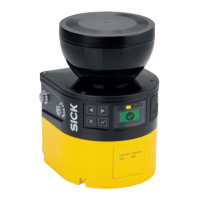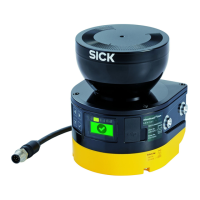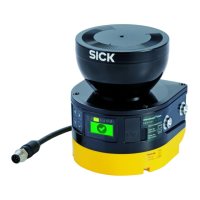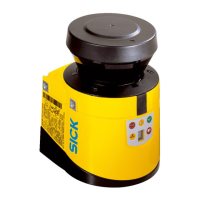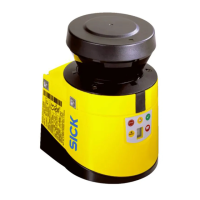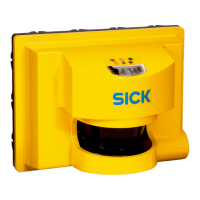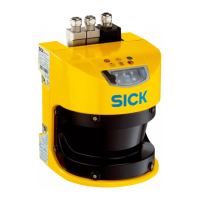The server (SICK sensor) returns the command with the following changes:
•
T
he MSB (Most Significant Bit) of NoC is set to the value 1 in order to label the
direction of transmission.
•
SessionID = The server sends the session ID that the client must use for all fur‐
ther requests to the server.
•
Mode = ‘A’ (letter X, 0x41)
•
The Timeout and ClientID fields are truncated.
The set-up session exists up to explicit completion or up to the timeout.
If the server (SICK sensor) does not receive a command from the client within Timeout
seconds, it ends the session. Then the client answers requests with the SessionID
with the error message "Invalid Session".
The client must send requests as often as necessary so that the timeout does not
expire. You can implement a timer on the client for this that is reset for each request.
After the timer has run out, the client should send a dummy command to maintain the
session.
Send Open Session command with ClientID and Timeout
Reply with SessionID "48098"
Send any CoLa2 commands using SessionID
Answer with CoLa2 replies
…
Send Close Session command
Reply with Session Closed reply
CoLa2 Server 1
CoLa2 Client
If the session is not explicitly closed, it will be destroyed after
timeout, if no more telegrams are received.
Create
local session
Destroy
local session
Figure 12: Expiration of a session
C
ommand to end a session:
•
Cmd = ‘C’
•
Mode = ‘X’
Server response:
•
Cmd = ‘C’
•
Mode = ‘A’.
7.2.4 Using the sensors
A client normally uses 3 commands in operation:
•
R
ead variables from SICK sensor.
•
Write variables in the SICK sensor.
•
Call up methods, i.e. activate a routine in the SICK sensor.
The available variables and methods are sensor specific. The following describes how
the commands need to be structured and how the responses of the SICK sensor can be
evaluated.
ANNEX 7
8022708/2019-04-15 | SICK T E C H N I C A L I N F O R M A T I O N | microScan3, outdoorScan3
33
Subject to change without notice
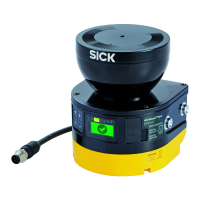
